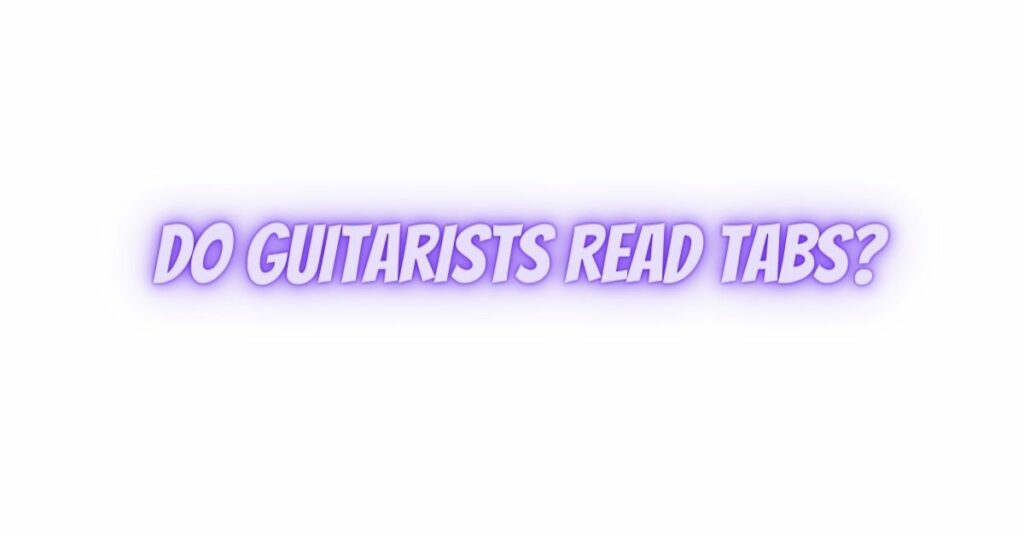Guitarists employ various methods to read and interpret music, and one of the most popular and accessible forms of notation is guitar tablature, often simply called “tabs.” In this comprehensive guide, we will explore the world of guitar tablature, discussing what it is, how it works, and whether guitarists read tabs.
1. What is Guitar Tablature (Tabs)?
Guitar tablature, commonly known as tabs, is a music notation system tailored for the guitar. Tabs provide guitarists with a straightforward visual representation of music, allowing them to learn and play songs without having to read traditional sheet music.
2. How Tabs Work:
Tabs are easy to understand, even for beginners. Here are the key components of a typical guitar tab:
- Strings: Horizontal lines represent the strings of the guitar, with each line corresponding to a specific string, from low E (the thickest string) to high E (the thinnest string).
- Numbers: Numbers on the lines indicate which fret to press on the corresponding string to produce a note. For example, “3” on the A string tells you to press the 3rd fret on the A string.
- Other Symbols: Tabs can also include various symbols and notations to convey specific techniques, such as slides, bends, hammer-ons, pull-offs, and more.
3. Advantages of Guitar Tabs:
Guitarists read tabs for several reasons:
- Accessibility: Tabs are accessible to guitarists of all skill levels, making it easier for beginners to learn their favorite songs.
- Visual Layout: The visual layout of tabs allows guitarists to see where their fingers should go on the fretboard.
- Simplified Music Notation: Tabs simplify complex musical notation, making it easy for guitarists to play songs without the need for formal musical training.
- Precise Techniques: Tabs often include specific instructions for techniques and effects, allowing guitarists to replicate them accurately.
4. Reading and Interpreting Tabs:
Guitarists read tabs by following these steps:
- Identify the strings: Determine which string each line in the tab corresponds to, starting with the low E string at the bottom and the high E string at the top.
- Locate the fret numbers: Read the numbers on the lines to identify which fret to press on each string.
- Timing and Rhythm: Tabs can provide information on the timing and rhythm of notes by indicating note duration, rests, and timing cues.
- Interpret symbols: Pay attention to any symbols or notations that convey special techniques or effects. These can include slides, bends, vibrato, and more.
5. Do All Guitarists Read Tabs?
While tabs are a widely used and practical form of notation, not all guitarists read them. Guitarists vary in their preferred method of learning and interpreting music. Some guitarists primarily use tabs, especially beginners, while others may rely on standard notation (sheet music) or a combination of both. Experienced musicians may be able to play by ear, listening to a song and recreating it without written notation.
6. Conclusion:
Guitar tabs are a valuable tool for guitarists, offering a straightforward and accessible means of learning and playing music. Whether you’re a beginner looking to play your favorite songs or an experienced guitarist who appreciates the convenience of tabs, they are an integral part of the guitarist’s toolkit. However, it’s important to remember that while tabs are a popular choice, guitarists have a range of methods at their disposal to read and interpret music, depending on their preferences and skill level.


